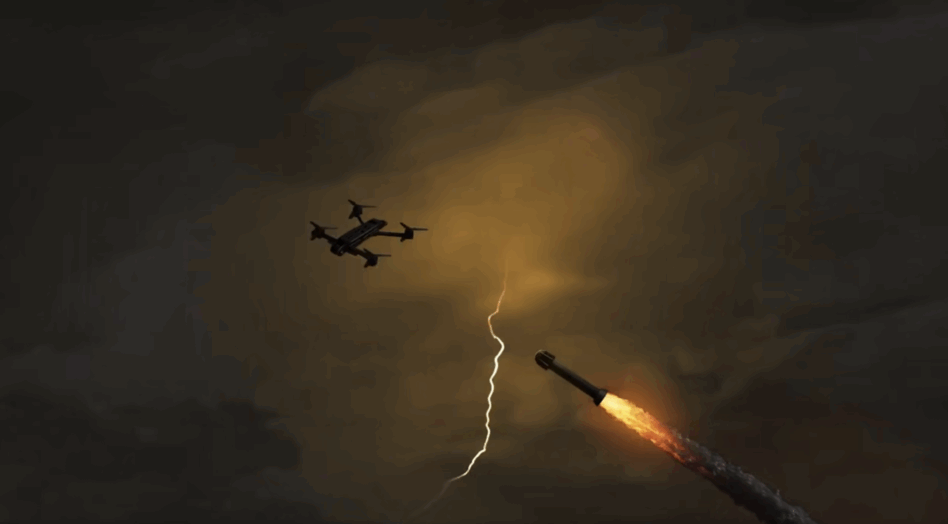Remember when Y Combinator startups made food delivery and crypto apps? Well, how times have changed.
Perseus Defense, which launched out of this year’s YC cohort, is definitely not the next DoorDash. The startup is building 15in mini-missiles capable of detecting, identifying, and destroying hostile drones. And, this morning, the team announced in an exclusive release to Tectonic that they’ve raised a $6M seed round from over 15 investors, including Alumni Ventures and Bow Capital, to help them scale.
AI notetaking startups, begone. Hard tech is so back.
Mini-missile madness: Perseus Defense is, in their words, building “America’s Golden Dome for Drones,” which manages to fit three of the buzziest words in defense in a short slogan. Looks like they’ve been paying attention.
Their mini-missile, according to co-founder Steve Messinger, “takes a Sidewinder missile and shrinks it down to miniature scale to make it in high volume at very low cost.” To him, that’s the best counter-drone solution because it’s “the hardest to defeat, and if you get smacked by a one–pound weight at, like, Mach .6, like you’re gonna fall out of the sky.” Can’t argue with that.
Hustle culture: In true YC fashion, the origin story of Perseus involved an impulsive move out to San Francisco, sleeping on couches, and, as the founders Jason Cornelius and Messinger told Tectonic, being “surrounded by a bunch of crazy people” and “college dropouts teaching us slang.” But unlike others in their YC cohort, they were driving seven hours to test launch missiles every weekend.
Call them crazy, but if anyone’s going to quit their jobs to build mini-missiles, Perseus’ founding team has the engineering pedigree for it:
- Cornelius helped lead major parts of the NASA Titan Dragonfly program, which aims to send a robotic rotorcraft to the surface of Titan, Saturn’s largest moon. He also teaches aerospace engineering at Stanford and speaks four languages, in case you didn’t feel bad enough already.
- Messinger worked on swarms of lighter-than-air vehicles for the Navy in grad school before heading to Boeing to build a reduced crew aircraft operations system, and then working on multi-agent autonomy for USV swarms at EpiSci.
- Their first hire—Messinger’s grad school roommate—worked on AeroVironment’s Red Dragon one-way attack drone.
Combo deal: Like anyone else watching the defense tech space, the Perseus team knows that the c-UAS scene is getting busy, but “from the Pentagon’s perspective, they want a layered defense strategy” that involves multiple approaches to getting drones out of the sky—RF blocking, GPS jamming, high-power microwave, mini-missiles, et al.
But the kinetic defeat space is getting busy too—Saab revealed their Nimbrix mini-missile at DSEI, L3Harris’ Vampire c-UAS platform launches APWKS missiles, and Raytheon has their Coyote c-UAS drone. They’re not worried. Perseus’ solution, according to Messinger, is “an order of magnitude cheaper—we’re coming in at less than five grand, and we might be able to get that down even more.”
“Our goal is to make it very hard for the enemy drone to get away from the missile, and do it at a cheap enough cost to be able to scale this up and kind of have it everywhere,” Cornelius added. “Even though it’s technically better than a lot of the other solutions, we still fully expect that it operates alongside and in combination with a lot of these other solutions too.”
Missile money: After they launched at YC on July 4th (very fitting), investors quickly picked up on the counter-drone hype. Their $6M seed round brought in Bow Capital (their biggest check), Multimodal Ventures, Lobster Capital, Rebel Fund, Alumni Ventures, Pioneer Fund, and over eight others, including YC co-founder Paul Graham.
In that group of investors, as Cornelius told Tectonic, “Some have manufacturing experience from Apple. Some have friends at the Pentagon or the White House. Some have friends in the EU or abroad. Some don’t have any of that, and they’re just excited about what we’re doing.”
Perseus says the Pentagon seems pretty excited, too. “There’s a lot of interest across all the DoD organizations, but the Army has shown the most willingness to move fast, and we’ve had some early conversations with the SOF community,” Messinger said, adding that they plan to do live-fire testing in January with the 1st Cavalry Division at Fort Hood.
As for next steps, they plan on moving down to Austin, building out their team and facility, and doing a lot of testing. Two months in and with $6M in hand, Messinger said Perseus is “taking off like a rocket ship.” A missile might be more appropriate.

